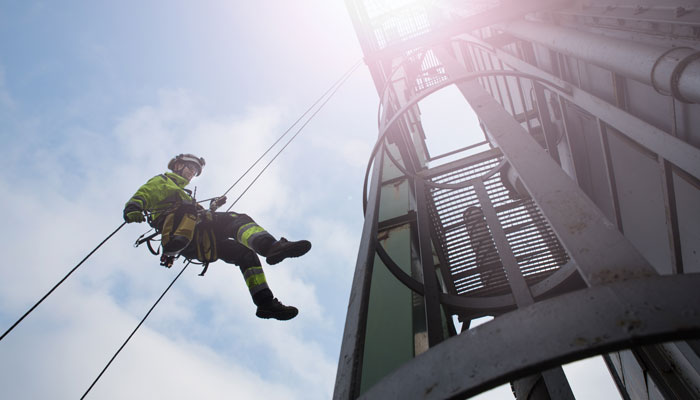Working from height myths that could risk worker’s safety

- 586,000 working days were lost to non-fatal injury by falls from height at work, 2022 - 2023 data
- 25% of deaths in the construction industry happened by falls from roofs (HSE, last 12 months of data)
Working from height is one of the most dangerous activities that can be undertaken in a profession, and it is the leading cause of workplace fatality. Despite this, there are commonly believed misconceptions which are putting worker’s safety and lives at risk in the workplace. Safety experts at Horizon Platforms want to raise awareness of the risk and encourage safe working practices, so have shared some common myths below to debunk.
1. I don’t need protection when working at a low height
Some workers may feel the risk is lessened at a lower height and therefore they do not need to take the same precautions with protective equipment or clothing. This is a dangerous mindset which could potentially lead to serious injury at work, should an accident occur. No matter how low the height, there is always an element of risk for workers. Falls from relatively low heights can still pose a serious risk to a worker's health.
2. I don’t need PPE for quick tasks at height
The same advice applies for quick tasks, no matter what height this is at. Just one small mistake, such as a slip, could lead to fatalities so is not worth the risk. Personal protective equipment could include clothing items like harnesses to secure workers at height, it may also include working equipment such as guardrails, anchors and hooks. In some cases, machinery may be required such as powered access equipment.
3. I must be qualified to use a ladder
This is a common myth believed by many workers, but in a way is welcome and the right mindset. Whilst there is no formal qualification requirement for using a ladder, safety guidance does outline that businesses must be confident that the worker is competent and have the necessary knowledge to ensure safe usage of ladders at work.
4. You don’t need to check safety equipment if it has been checked once before
This is a common mistake made within businesses, they think because equipment has been previously inspected it must be ok for use. The issue is, over time many things may have changed since the last inspection which could change the outcome of using the equipment. All equipment, whether clothing or tools, should be checked before each use. You will not know if items have degraded over time or been damaged without your knowledge.
5. I can save money by not purchasing PPE for working at heights
Businesses may think they are saving money not buying extra protective equipment but should a worker suffer an accident they will be liable for a potentially large sum if the accident leads to legal action, prison time may be a possibility also. Compensation, fines and loss of earnings due to long-term ill health can all be expensive outcomes caused by a failure to meet safety standards for working at height.
6. I am not responsible for protecting external contractors onsite
Employers are responsible for carrying out risk assessment and providing safe working environments for contractors. The contractors themselves additionally have a responsibility to follow proper protocol and ensure their competency when working at height. It is a common misconception that if you hire an external contractor you are not liable for health and safety accidents or incidents but this is not the case.
Add your comment

- Catering 1
- Construction 39
- Contracts, Projects, Bids 19
- Energy Management 103
- Engineering, Maintenance 623
- Estates, Property 36
- Events 1
- Facilities Management (main) 278
- Front of House 1
- Hard Services 54
- Health & Safety 1
- HVAC 218
- Management 2
- M&E 224
- Operations 81
- Procurement 19
- Sales & Marketing 4
- Soft Services 3
- Sustainability 1


